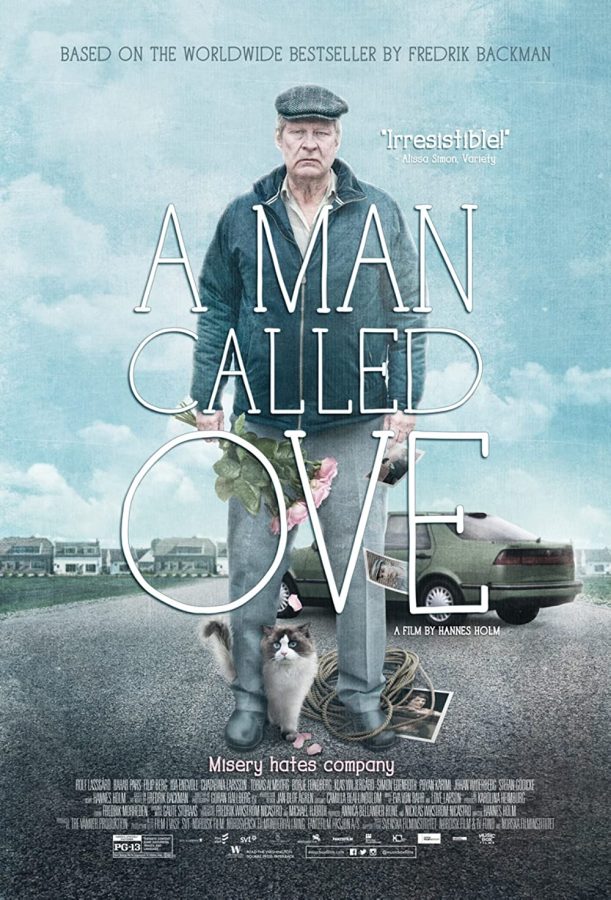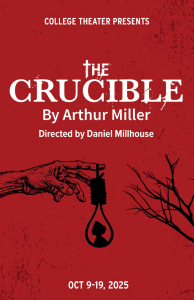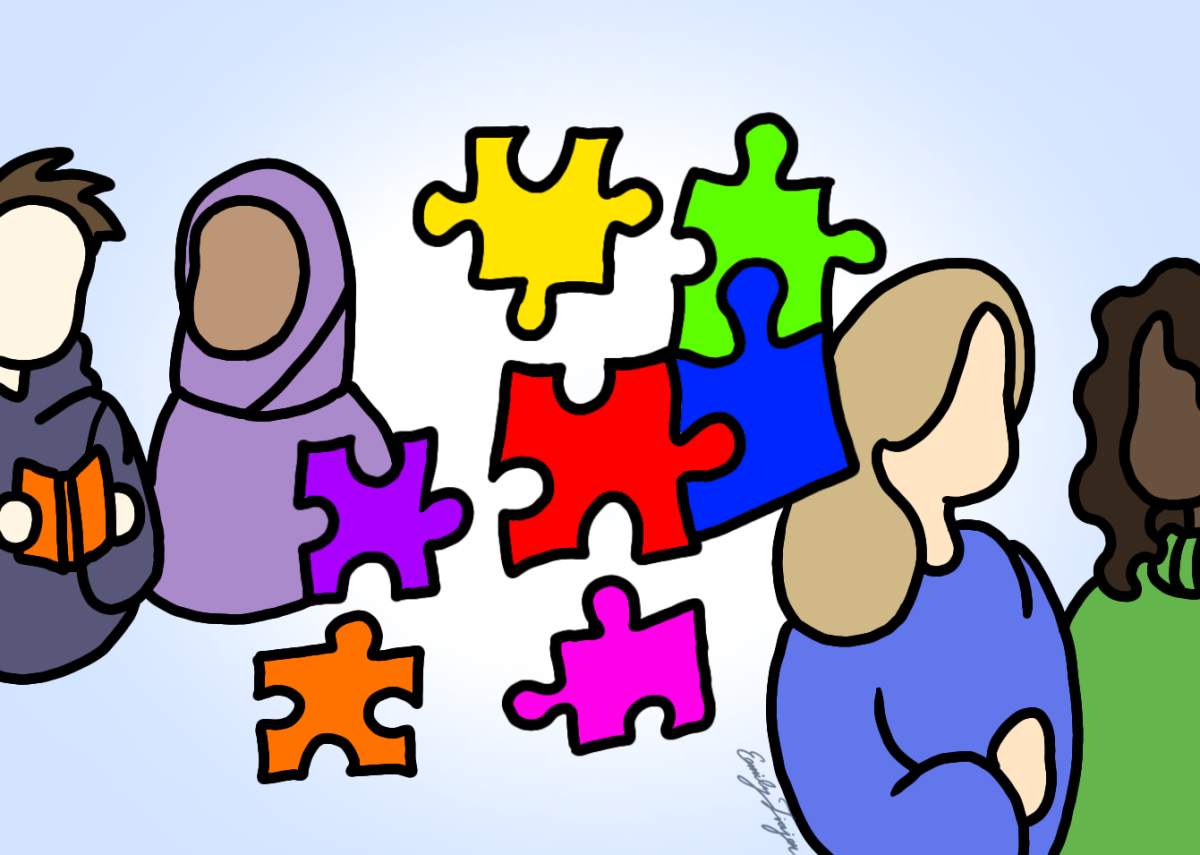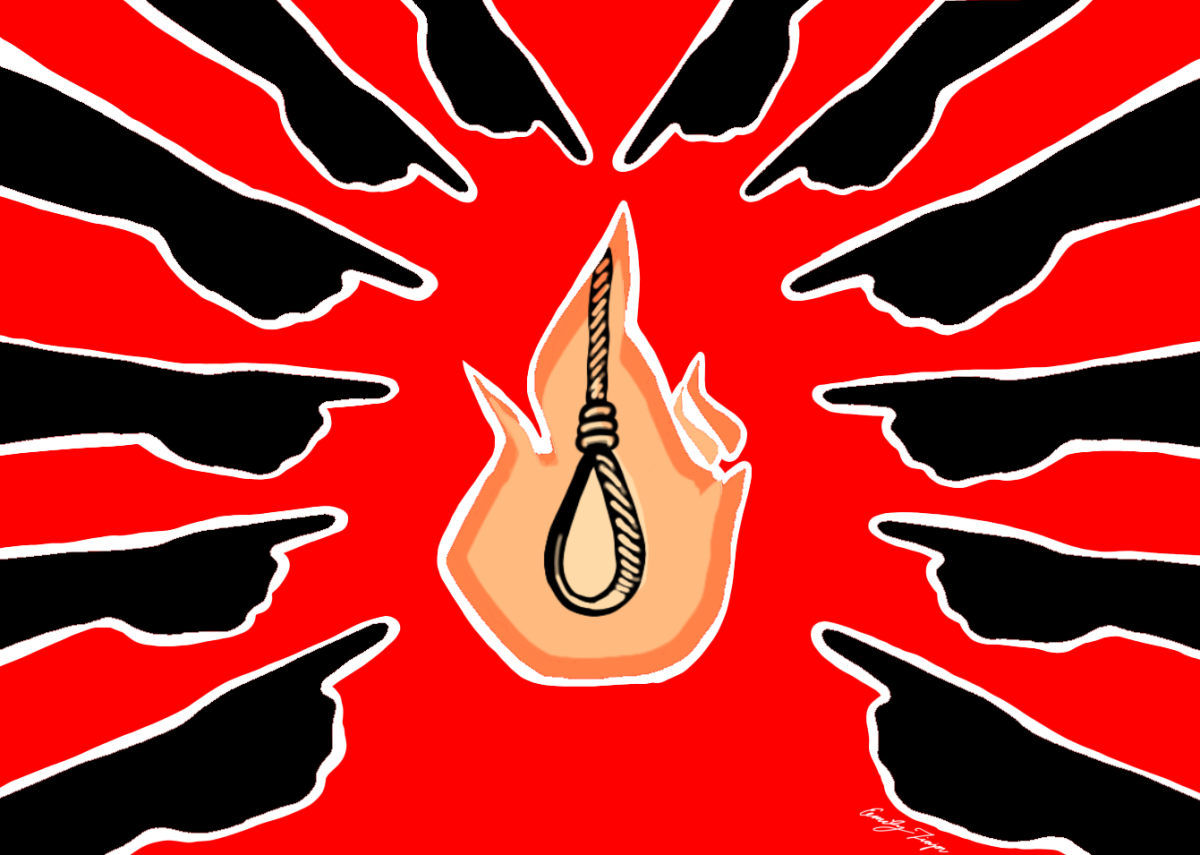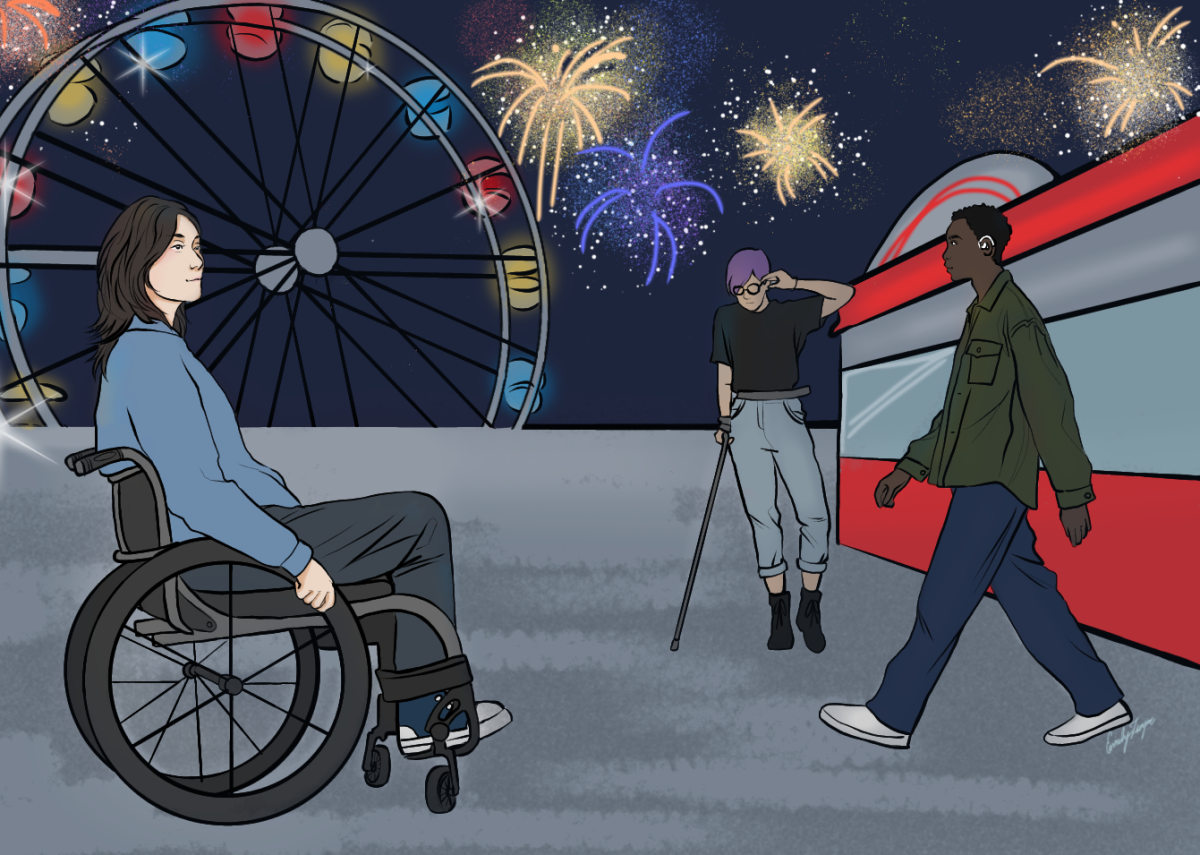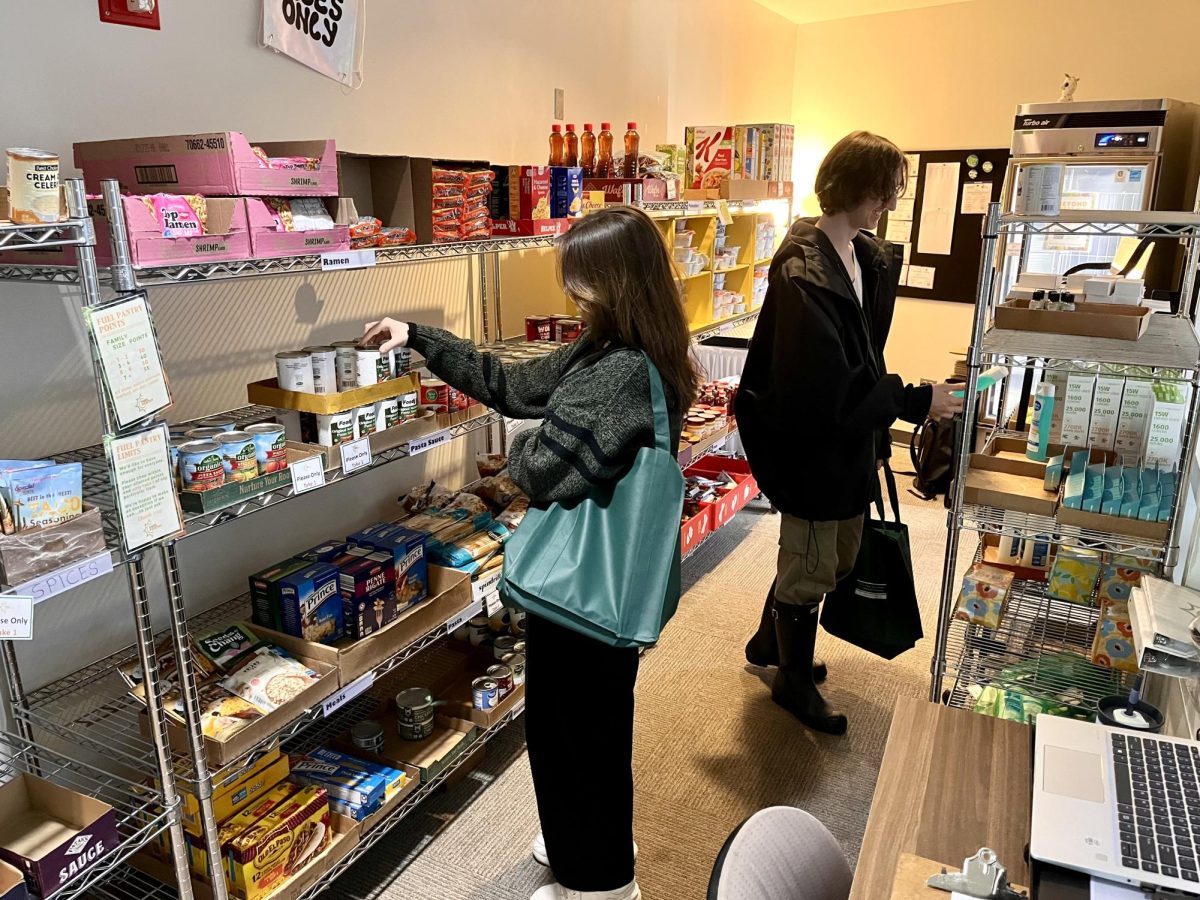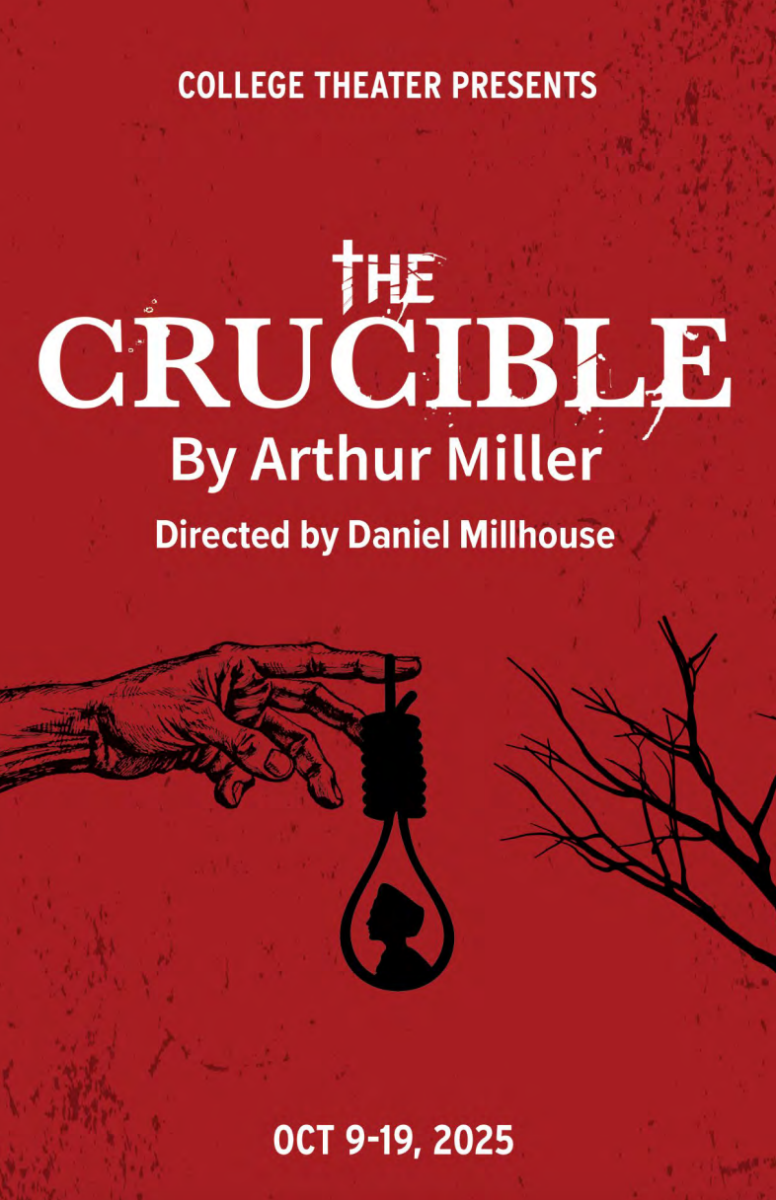Deadpan Humor and A Hard Knocks Life in “A Man Called Ove”
A sour elderly man turns a new leaf and makes a change of heart.
March 6, 2023
Ove, a geriatric man with a perturbed expression, is in a flower shop where he finds a little pink bouquet. After getting in line to buy it, he sees a woman come up and cut him in line when he blurts, “No, no, no. This line starts behind me,” in an old, assertive voice.
At the counter, he insists that because the deal for the flowers was 75 Danish Kroner (about $11) for two bunches, he should be able to get one for 35 kr ($5). But, the woman at the register says it’s 50. Flustered by this, he asks for the woman’s boss, to which she responds that her boss is on lunch. “Lunch?” He exclaims, his eyes fixed at the woman in a bitter stare. “She should be working on her times tables.”
This scene establishes the tone of “A Man Called Ove,” casting Rolf Lassgard as Ove.
We see an embittered old man navigate his life a certain amount of years after the death of his wife, Sonja. In the film, we see his bitterness manifest in countless ways that are at times unsettling and at others hilarious. Exchanges with his neighbor Clownen always involve her dog as the punchline, a chihuahua that he can’t help but take issue with. Other interactions are with his newly-made neighbors across the lane who are initially rejected by him at every turn, either by his jeering, sneering or visible disgust towards them. Later on, we see Ove explicitly disregard his boss, a younger man with a peppier attitude, as he walks away from his job just as he’s about to be let go.
Despite Ove’s off-putting nature, though, there are consistent, heart-felt moments throughout the movie, well placed and sensible considering the plot. The throughline of these is him visiting his wife’s grave, each time coming with an update on the changes in his life, wearing his heart on his sleeve and acting infinitely more comfortable than he is around any living person.
Another throughline in the film is Ove’s suicide attempts, which are introduced early in the film. In these attempts, Ove experiences flashbacks that we see in all their detail, from his childhood, to his adolescence, and then to his marriage. This working in of Ove’s past with his present suicide attempts is a great choice by screenwriter Hannes Holm.
The film’s soundtrack kicks in in the beginning of the film at the first visit of Sonja’s grave with a consistent, percussive beat. Throughout the film, the soundtrack reflects the larger and more subtle tonal shifts, as well as not overpowering any of the scenes.
The lighting and framing of the movie has a consistent dull, blue and yellow look that brings out scenes where the palette really pops, such as when in a flashback, Ove’s 20s self (Filip Berg) comes back to the trainyard after his late father’s house burns down. The sorrowful moment is highlighted by the strong, steely blue and oranges of the trains and the reflection of the dark blue sky in their metallic frames.
The performances are great. That includes all of Ove’s younger selves (Victor Baagoe and Filip Berg), especially Berg as Ove’s 20s self, where he gives a touching and moving performance in scenes where he finds his first love.
Lassgard as Ove’s old self gives a great performance, at times being so vulnerable that you can see him welling up with tears after seeing his late wife Sonja’s photo, and at others insulting his neighbors with a deadpan delivery that kills. Additionally, his performance has a sincerity that’s difficult to find in such a varied character, as shown when visiting his wife’s grave and at times delivering somewhat joking lines about a cat that he adopts to post-his first suicide attempt where, speaking to her grave, he somberly smiles, “Well, I think this is the first time you’ve ever had to wait for me.”
Supporting performances by Bahar Pars as Nasanin and Ida Engvoll as Sonja are excellent, as shown in scenes where Nasanin does her best to get Ove to open up and smile, and in others where Sonja is dearly and sweetly staring into the younger Ove’s eyes.
The movie did have a story-bookish ending that didn’t sit well with me. The movie started out with a logical and understandable flow, but near the end everything became too confusing. I was expecting the film to have a grounded, somewhat darker ending. Certain conflicts were resolved without much issue or lacked the context necessary to make it fit with the logical style. At that point, the plot gave up on suggestion, and instead went for an ending that felt too soon and somewhat forced.
But, overall the film was great, and from what I’ve seen of the remake involving Tom Hanks (“A Man Called Otto” on AppleTV+), the latter doesn’t match it. “A Man Called Ove” can be watched on Tubi for free.



